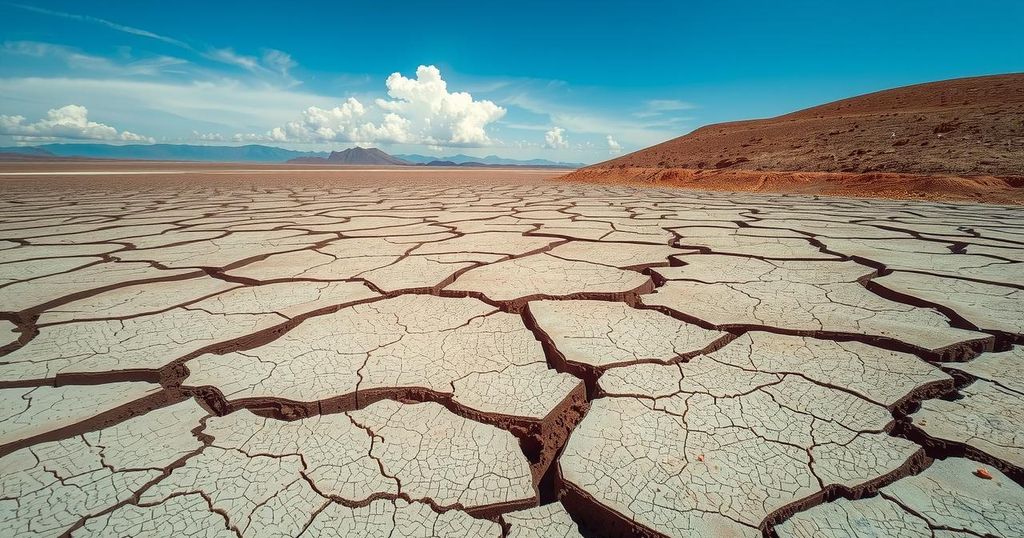Experts have raised concerns about potential long-term water scarcity in São Paulo despite current reservoir stability. Increased heatwaves and irregular rainfall patterns are contributing to anxiety over water supply sustainability. Notable infrastructure improvements have been made since previous crises, yet continued vigilance and collaborative initiatives remain essential to address the impacts of climate variability and ensure future availability of water resources.
Current reservoir levels in the São Paulo metropolitan area are notably stable, prompting reassurances regarding immediate water supply. Experts, however, highlight growing concerns over long-term water security due to climate anomalies. The rain season is concluding, with only the Alto Tietê system reporting below-average levels, leading to warnings about possible future scarcity amid climate fluctuations.
José Marengo, general coordinator at the National Center for Monitoring and Early Warning of Natural Disasters, pointed out that while the situation is not dire, it necessitates cautious monitoring, especially with changing meteorological patterns attributed to El Niño and La Niña influences. In Greater São Paulo, which serves over 20 million residents, the average reservoir capacity is at 61.7%, down from 77.3% last year.
Samuel Barreto from The Nature Conservancy remarked on the region’s diminished rainfall, stating that historical averages have not been met since October 2022. The intensity and irregularity of rain patterns have been a significant concern, with increased temperatures also contributing to a heightened risk of wildfires, as seen in western São Paulo.
Researcher Ana Paula Cunha noted that while summer storms might give an impression of adequate rainfall, data indicate a decline in overall precipitation. The rainfall occurs over fewer days with more intensity, leading to potential disasters rather than broader water security. Samanta Souza from Sabesp acknowledged the present comfort in supply levels but emphasized the need for ongoing efforts to maintain water security.
Former president of the National Water Agency, Jerson Kelman, credited past engineering efforts for improved water resilience in the metropolitan area. Recent records for water treatment indicate an increase in capacity, reflected in February’s output of 72.5 million liters per second, the highest recorded since 2006.
Marengo pointed to the need for improved water distribution infrastructure, warning against sewage losses due to poor pipeline conditions. Cunha attributed the changing climate patterns to greenhouse gas emissions. Immediate actions are critical to curb the negative impacts of climate change, but significant long-term risks remain.
Souza presented a water security plan aimed at maintaining reservoir levels, including a project to transfer raw water from the Itapanhaú River. Additional plans include expanding water sourcing from local rivers by 2027. The São Paulo Municipal Government is also developing sanitation plans to enhance water supply sustainability.
Barreto emphasized that infrastructure enhancements are not sufficient alone, advocating for resilience measures alongside traditional enhancements. He also promoted reforestation of watersheds, supporting claims that improved vegetation would significantly benefit water resource availability.
Secretary Natália Resende stated that substantial reforestation and funding for enhanced water supply measures are underway to combat historical drought challenges. As climate uncertainties loom, the imperative remains for systematic planning, infrastructure improvement, and sustainable practices to secure water resources effectively for the future.
In conclusion, despite the current stability in São Paulo’s reservoir levels, experts emphasize the necessity for significant long-term actions to uphold water security in the face of unpredictable climate changes. Strategies must include infrastructure improvements, resilient management approaches, and a focus on environmental sustainability. Collaborative efforts across agencies and continued investment in water conservation are critical to mitigate the risks associated with climate change and ensure a secure water supply for the region.
Original Source: valorinternational.globo.com




